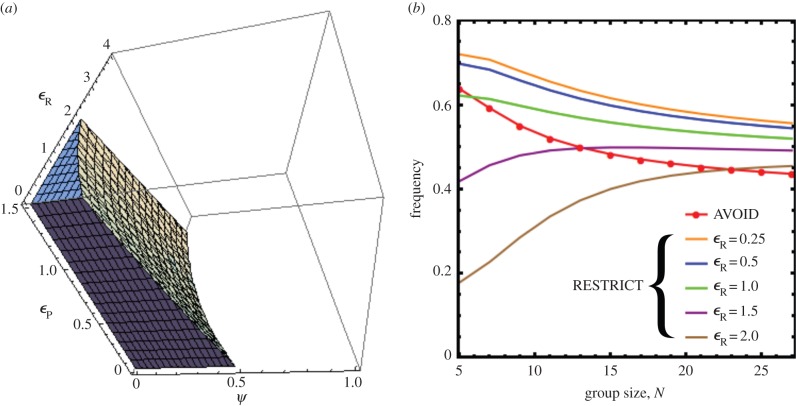Figure 3.
(a) Range of parameters ψ, εR and εP, generated from the analytical formula in equation (2.10), in which RESTRICT is better than AVOID. For a large range of cost for restricting, the access of non-committers, εR, and the effect of restriction, ψ, RESTRICT is better than AVOID. In general, the larger εR, the smaller ψ is required for RESTRICT to be advantageous to AVOID. (b) Group size is an important factor for making RESTRICT more viable than AVOID. We compute, as a function of the group size, N, the frequencies of RESTRICT for different values of restriction cost εR (the curves without markers), in comparison to the frequency of AVOID (the red curve with circled markers). In general, the lower the cost of restriction, the higher the frequency of RESTRICT. Also, the threshold of N above which RESTRICT is more frequent than AVOID is smaller. Parameters: in panel (b), Z = 100, εP = 0,25, ψ = 0.25, β = 0.1; in both panels, N = 5, r = 3.

